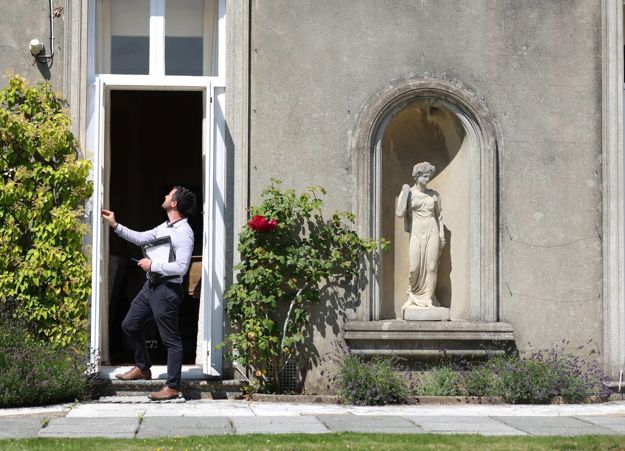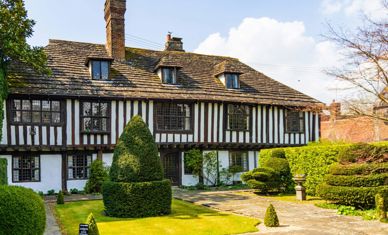Few cities in the UK capture charm and character quite like Bath. With its Georgian crescents, golden stone terraces, and sweeping views over the Avon Valley, it’s no wonder Bath regularly ranks among the country’s most desirable places to live.
But while its beauty is timeless, the buildings themselves often come with quirks, character and a few surprises beneath the surface. Whether you’re buying a period townhouse in Lansdown or a riverside apartment in Bathwick, a detailed survey is essential to understand exactly what you’re purchasing.
Here’s what every Bath homebuyer should know before making an offer.

1. A city built on history and heritage
Bath’s distinctive architecture is a huge part of its appeal. Most period homes are built from Bath stone, a soft limestone that gives the city its golden glow. Locally quarried Bath stone was mainly extracted from the hilly ground to the south and east of the city, where the Great Oolite, a distinctive Jurassic limestone bed, is exposed near the surface. It’s beautiful, but also porous and prone to weathering.
|
Property Type |
Typical Area |
Common Survey Findings |
Buyer Watchpoints |
|
Georgian terraces |
Royal Crescent, Lansdown |
Damp penetration, stone weathering, structural movement, ageing roofs |
Listed building restrictions and maintenance costs |
|
Victorian/Edwardian homes |
Oldfield Park, Bear Flat |
Rising damp, structural cracks, outdated wiring/plumbing, timber decay |
Energy efficiency improvements often needed |
|
Converted flats |
City centre, Bathwick |
Condensation/mould, poor sound insulation, drainage issues, fire compartmentation defects |
Check communal maintenance and lease terms |
|
New builds |
Bath Riverside, Mulberry Park |
Snagging defects, ventilation issues |
Quality can vary between development |
Apart from the New Builds, these buildings often carry centuries of history but that means they also demand care, maintenance, and a clear understanding of condition before you buy.
2. Local survey considerations in Bath
Our surveyors frequently work in and around Bath, and there are a few local themes that crop up again and again:
- Bath stone weathering: Over time, exposure to the elements can cause erosion or damp penetration, especially where repointing hasn’t been maintained.
- Inappropriate use of cement-based mortars: Traditional Bath stone buildings were constructed with lime-based mortars, valued for their flexibility and breathability. Inappropriate repointing with hard cement mortars can trap moisture and accelerate the deterioration of the stonework.
- Bath’s geology: Bath’s geology includes clay-rich soils, which can expand when wet (causing heave) and shrink during dry spells (leading to subsidence). These movements can crack foundations and walls, particularly near trees or during periods of changing climate.
- Historic construction: Many period homes were built long before modern waterproofing or insulation methods existed, so damp and ventilation issues are common.
- Basements and vaults: Cellars are a typical Bath feature. Charming, but often damp-prone if not properly tanked.
- Hillside construction: Properties built into Bath’s hills can experience drainage challenges or movement due to topography.
None of these issues should put buyers off but they highlight why a local surveyor, familiar with Bath’s building styles and soil types, is invaluable.

3. Buying in a UNESCO World Heritage city
Because of Bath’s heritage status, many homes come with planning restrictions, particularly for external alterations or extensions. This can limit what you can do to improve energy efficiency or make cosmetic changes.
A survey report not only identifies defects but also highlights the implications of listed status or conservation rules so you know what’s possible before committing to your purchase.
“Bath’s homes are part of what makes the city so special but with that character comes complexity. Understanding how a property’s age, materials, and history interact is key to protecting your investment,”
4. A market where speed and clarity matter
Bath’s property market remains competitive, with strong demand from commuters, retirees, and investors alike. Character homes sell fast and buyers often feel pressured to skip a survey to move quickly.
But with many of the city’s properties built before modern building standards, a survey isn’t just reassurance, it’s protection. It can uncover repairs that might affect your offer, or confirm that your dream home is in great shape.

5. The homebuyer journey, made simple
Booking a survey with Nuven is straightforward. From your initial contact to receiving your report, we keep you updated at every step so you know exactly what’s happening and when.
(Look out for our upcoming Homebuyer Journey animation, walking you through the full process from booking to report.)
Thinking of buying in Bath?
With its blend of heritage and heart, Bath is one of the UK’s most rewarding places to buy but it pays to go in informed.
At Nuven, our RICS-accredited surveyors combine technical expertise with local knowledge to give you a clear picture of your property’s condition and potential.
👉 Ready to book your RICS survey in Bath? Contact our team today and take your next step with confidence.



